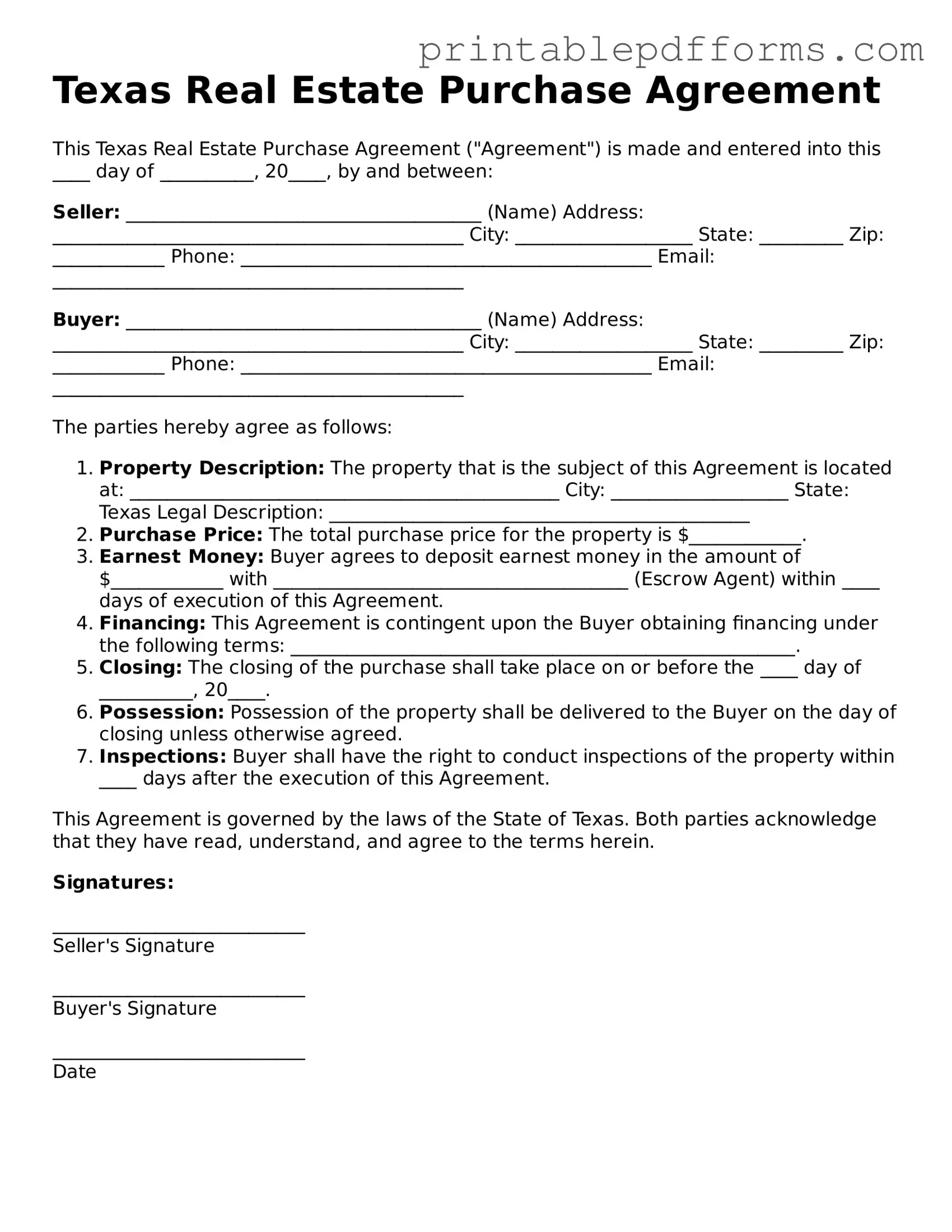Texas Real Estate Purchase Agreement
This Texas Real Estate Purchase Agreement ("Agreement") is made and entered into this ____ day of __________, 20____, by and between:
Seller: ______________________________________ (Name)
Address: ____________________________________________
City: ___________________ State: _________ Zip: ____________
Phone: ____________________________________________
Email: ____________________________________________
Buyer: ______________________________________ (Name)
Address: ____________________________________________
City: ___________________ State: _________ Zip: ____________
Phone: ____________________________________________
Email: ____________________________________________
The parties hereby agree as follows:
- Property Description: The property that is the subject of this Agreement is located at:
______________________________________________
City: ___________________ State: Texas
Legal Description: _____________________________________________
- Purchase Price: The total purchase price for the property is $____________.
- Earnest Money: Buyer agrees to deposit earnest money in the amount of $____________ with
______________________________________ (Escrow Agent) within ____ days of execution of this Agreement.
- Financing: This Agreement is contingent upon the Buyer obtaining financing under the following terms:
______________________________________________________.
- Closing: The closing of the purchase shall take place on or before the ____ day of __________, 20____.
- Possession: Possession of the property shall be delivered to the Buyer on the day of closing unless otherwise agreed.
- Inspections: Buyer shall have the right to conduct inspections of the property within ____ days after the execution of this Agreement.
This Agreement is governed by the laws of the State of Texas. Both parties acknowledge that they have read, understand, and agree to the terms herein.
Signatures:
___________________________
Seller's Signature
___________________________
Buyer's Signature
___________________________
Date
